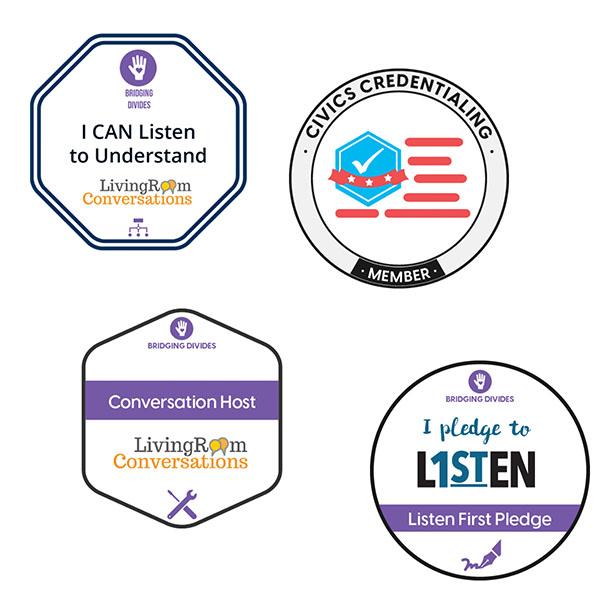Digital Badges: How They Recognise and Validate Skills & Achievements
introduction
In today’s digital age, traditional paper certificates are no longer enough to validate the depth and breadth of a person’s skills and accomplishments. Digital badges have emerged as a dynamic, interactive way to recognise and validate a wide range of competencies, achievements, and learning experiences. Weather you’re an educator, a professional looking to boost your employability, or an organisation seeking innovative recognition methods, digital badges are reshaping how we showcase skills in an increasingly connected world.
what Are Digital Badges?
Digital badges,sometiems called digital credentials or micro-credentials,are visual tokens of achievement,skill,or knowledge that can be earned online and easily shared through digital platforms. Unlike traditional certificates,digital badges contain metadata that describes what was done to earn the badge,who issued it,when,and often links to evidence of the skill or achievement.
- Visual: Eye-catching icons that represent an earned achievement.
- Verifiable: Each badge carries secure information about the criteria met.
- Shareable: Can be featured on LinkedIn,digital portfolios,resumes,or social media.
How Digital Badges Recognise & Validate Skills
digital badges go far beyond simply acknowledging participation—they are powerful tools for recognising and validating skills and achievements in both educational and professional contexts. Here’s how they work:
1.Competency-Based Recognition
Each digital badge is typically aligned with a specific set of competencies or standards. Recipients must demonstrate these competencies, often through assessments, projects, or practical experience, before earning the badge.
2.Embedded Metadata
One of the key features of digital badges is their embedded metadata. This data includes:
- Badge issuer details
- Criteria for earning the badge
- Issue date and expiration (if applicable)
- Evidence and verification links
3. Verified Validation
Since badges are issued on secure platforms, employers or institutions can verify the authenticity of the badge and its requirements. This builds trust and ensures credibility, unlike traditional paper certificates, which can be easily fabricated.
4. Flexible & modular
Digital badges can be awarded for a variety of achievements, from completing a short online course to mastering advanced technical skills or soft skills. This allows for modular recognition, perfectly tailored to lifelong learning and upskilling.
Benefits of Digital badges
- Increased Visibility and Shareability: Add badges to LinkedIn profiles,resumes,ePortfolios,and personal websites to boost professional exposure.
- Enhanced Motivation and Engagement: Learners are more motivated to complete training when they receive recognised, sharable badges for achievements.
- Lifelong Learning Support: Digital badges support continuous professional development by recognizing incremental achievements along a career path.
- Employer Trust and Instant Verification: Employers can easily verify a candidate’s skill set, improving the recruitment process and reducing risk.
- Customizable and adaptable: Badges can be tailored to specific skills, industries, or career stages.
- Global Recognition: Digital badges transcend borders, offering recognition on an international scale.
Practical Tips: How to Use Digital Badges for Career Growth
- Choose Accredited badge Platforms: Use reputable badge issuers such as Credly,Badgr,and Open Badge Factory to ensure your accomplishments are widely recognized.
- Display Strategic Badges: Curate your badges to highlight the most relevant skills and showcase them on LinkedIn and your online portfolio.
- Combine With Traditional Qualifications: Use badges as a complement, not a replacement, for degrees and certifications.
- Leverage for Job Applications: Attach badges to your resume and reference them in cover letters to give tangible proof of your abilities.
- Encourage Organizational Adoption: If you’re an educator or employer, integrate badge programs into your learning and development initiatives.
Case Studies: Real-World impact of Digital Badges
Mozilla’s Open Badges Initiative
Mozilla’s Open Badges project pioneered the development of open technical standards for digital badges. universities and MOOCs worldwide now use this standard to issue thousands of badges, ensuring interoperability and recognition across platforms.
IBM Digital Badges Program
IBM has awarded millions of digital badges globally through its learning and certification programs. Employees report higher engagement, while employers consistently use badges to match staff with relevant projects.
Google Cloud Skill Badges
Google Cloud issues skill badges to professionals who complete hands-on labs and assessments,helping IT professionals signal their proficiency to employers and clients.
first-Hand Experience: The Value of Digital Badges
“After completing a professional development course, I received a digital badge. Placing it on my LinkedIn profile not onyl attracted recruiters but also sparked conversations about my skills that paper certificates never did. My confidence in personal branding skyrocketed.”
— Sarah T., Project Manager
Digital badges don’t just validate what you know—they help you communicate it effectively in a crowded job market.
Choosing the Right Digital Badge Provider
When adopting digital credentials for yourself or your organization, consider these factors:
- Reputation and Accreditation: Opt for issuers known for quality and recognition, such as Credly, Badgr, and Acclaim.
- Interoperability: Ensure the badges comply with open standards, like Open Badges, so that they are widely accepted and transferable.
- Ease of Verification: Badges should have clear paths for authentication and verification.
- Rich Metadata: Detailed metadata makes each badge meaningful and trustworthy.
Conclusion
Digital badges are revolutionizing how skills and achievements are recognised, validated, and shared in our digital society. Whether you are seeking to showcase your unique skill set, motivate learners, or streamline hiring, these micro-credentials provide a flexible, verifiable alternative to traditional forms of recognition. Start exploring digital badges today and unlock new pathways for lifelong learning, professional development, and career advancement.
for more insights on career development, digital credentials, and the future of skills recognition, subscribe to our newsletter or check out our latest articles. Digital badges may just be the edge you need in today’s competitive landscape!

